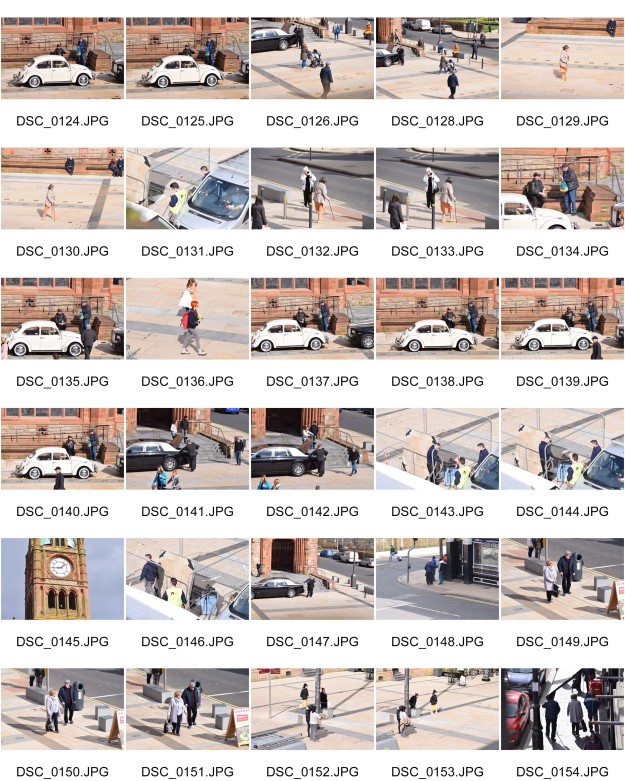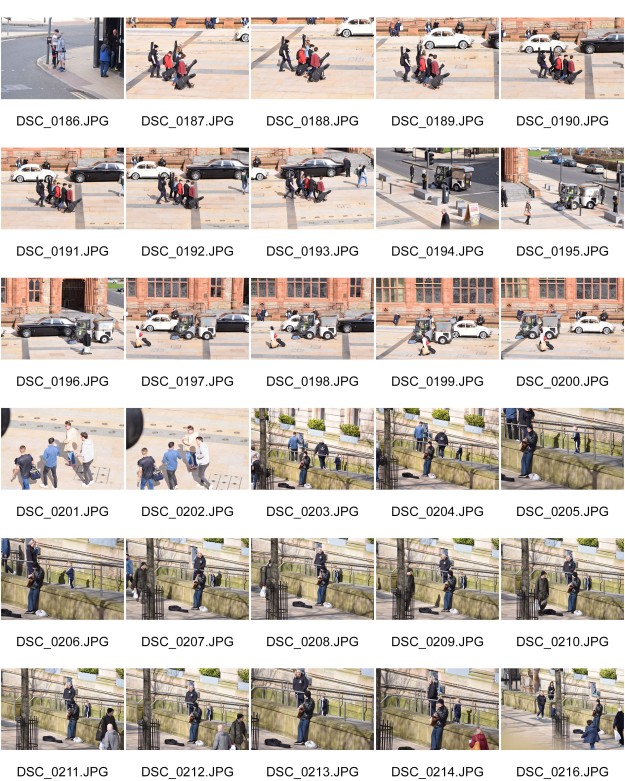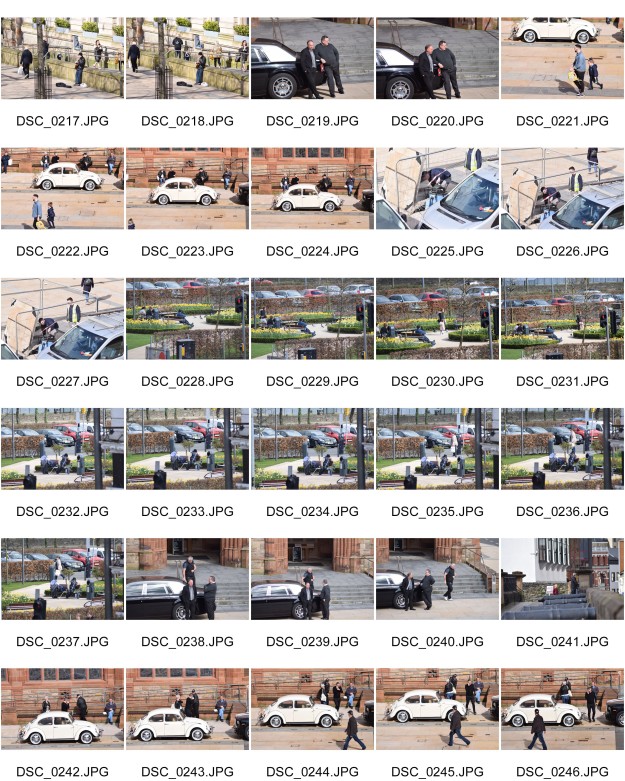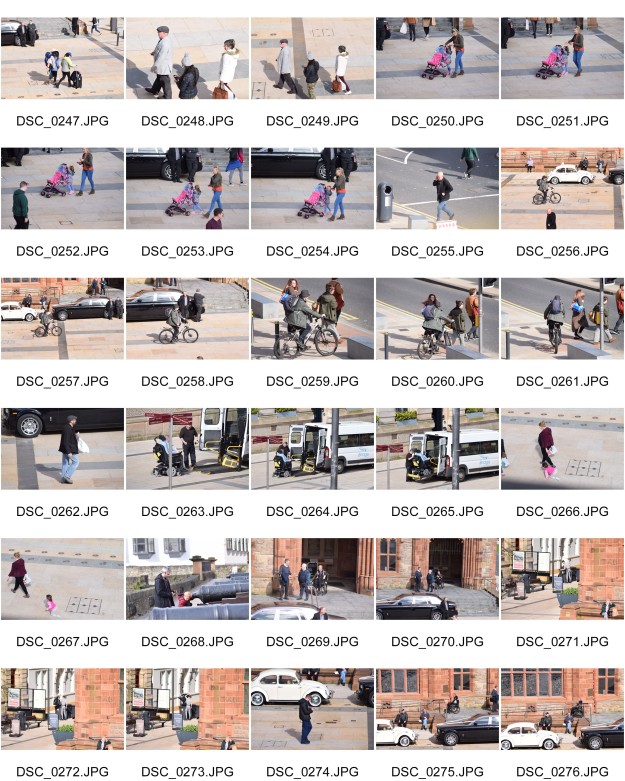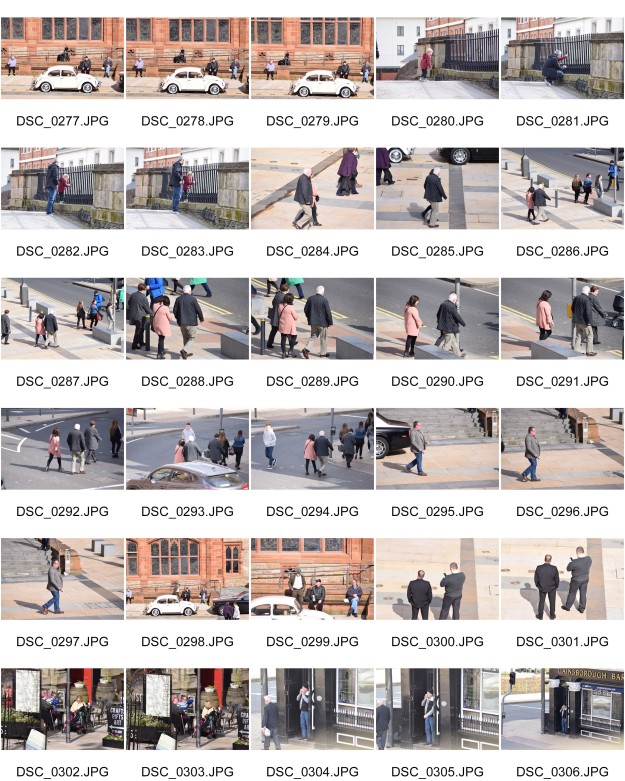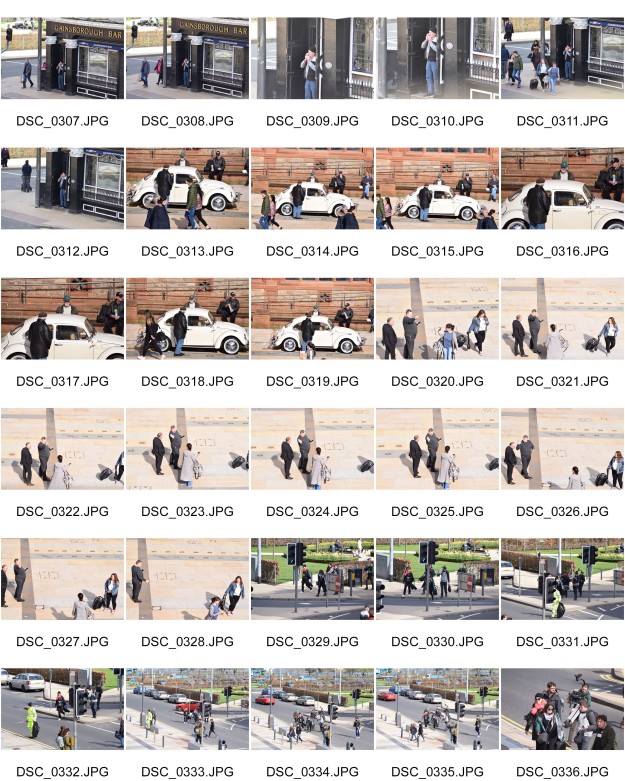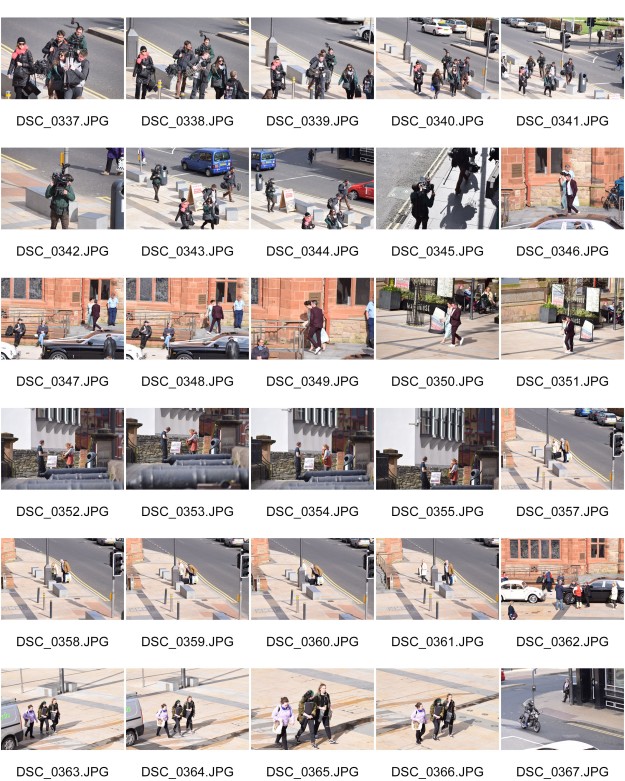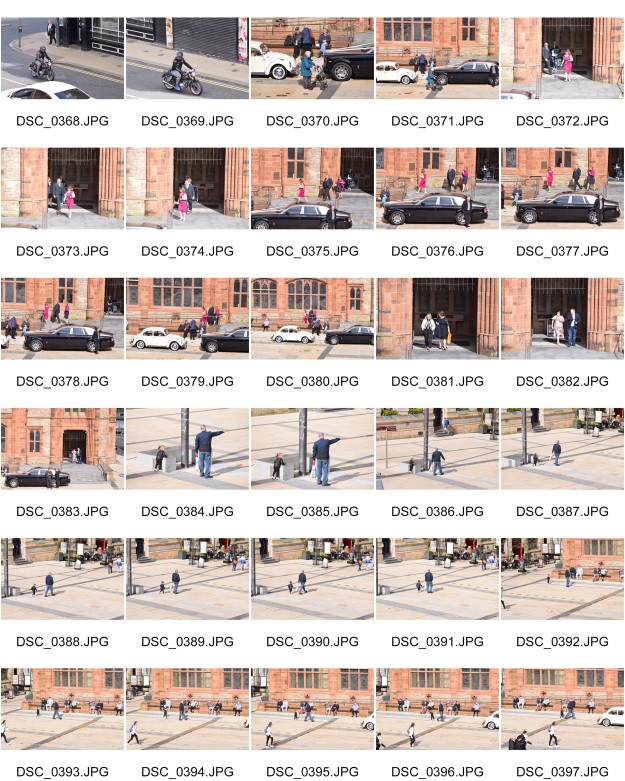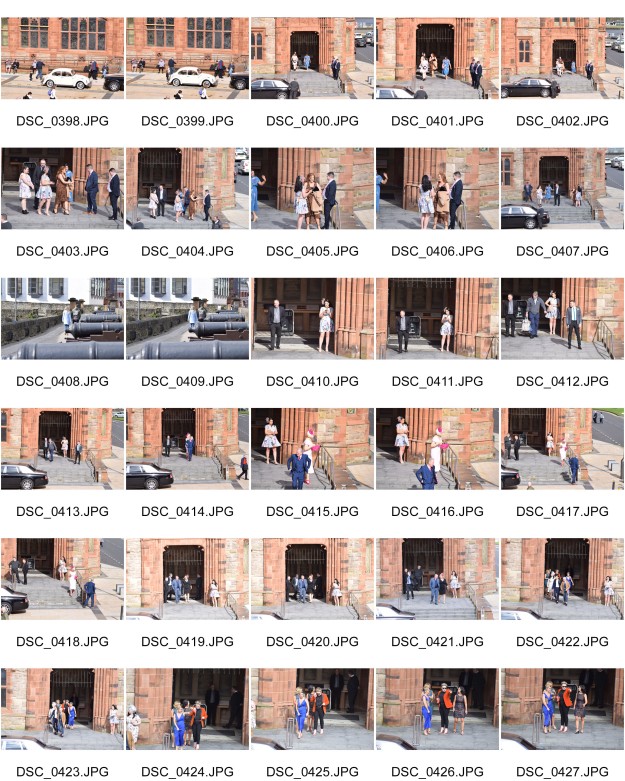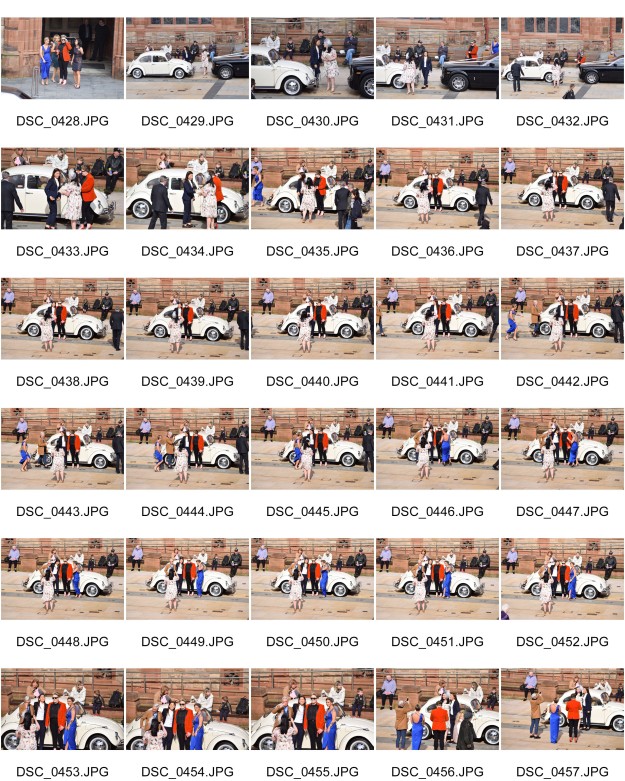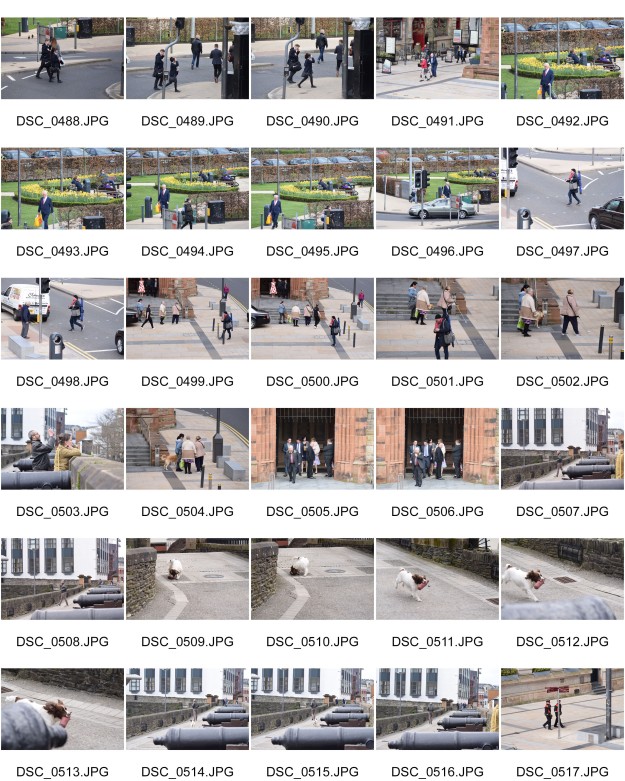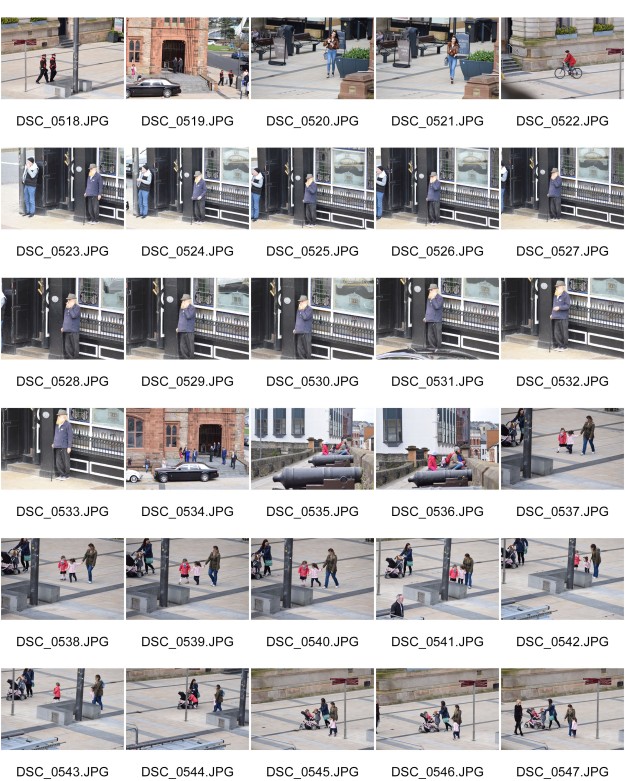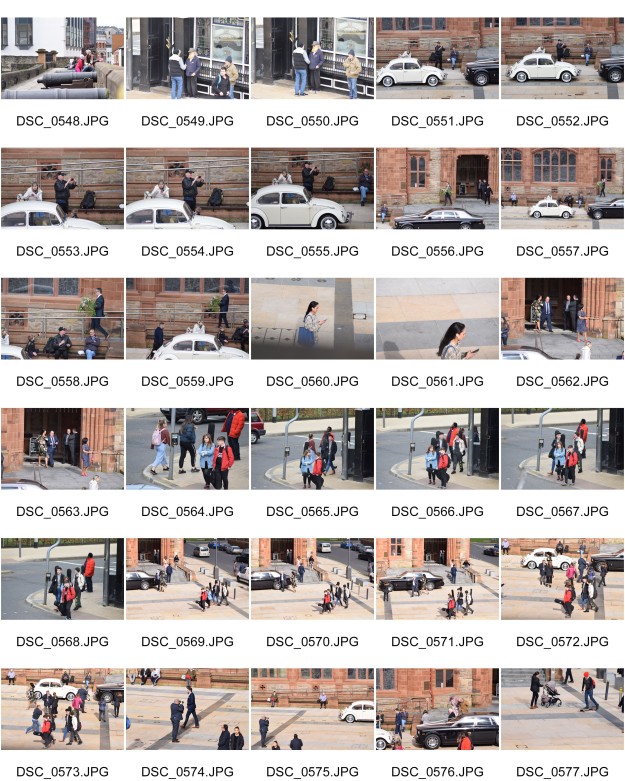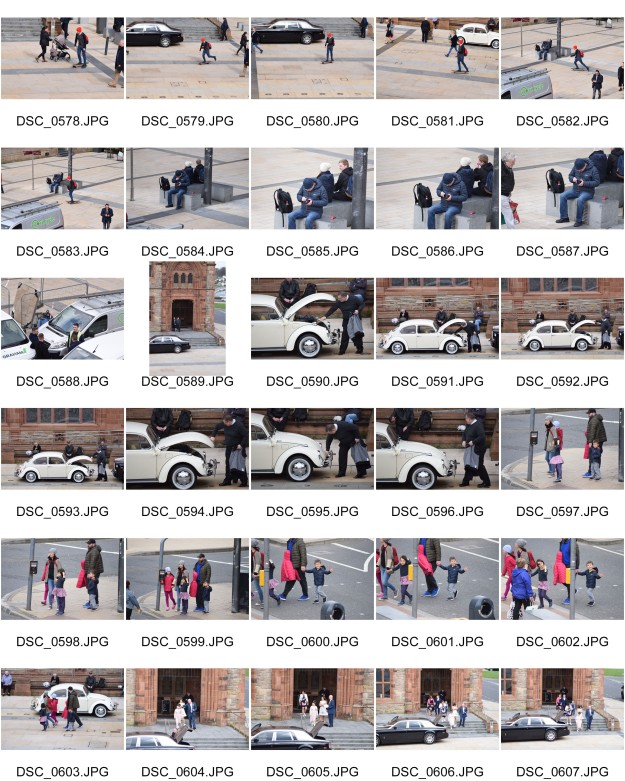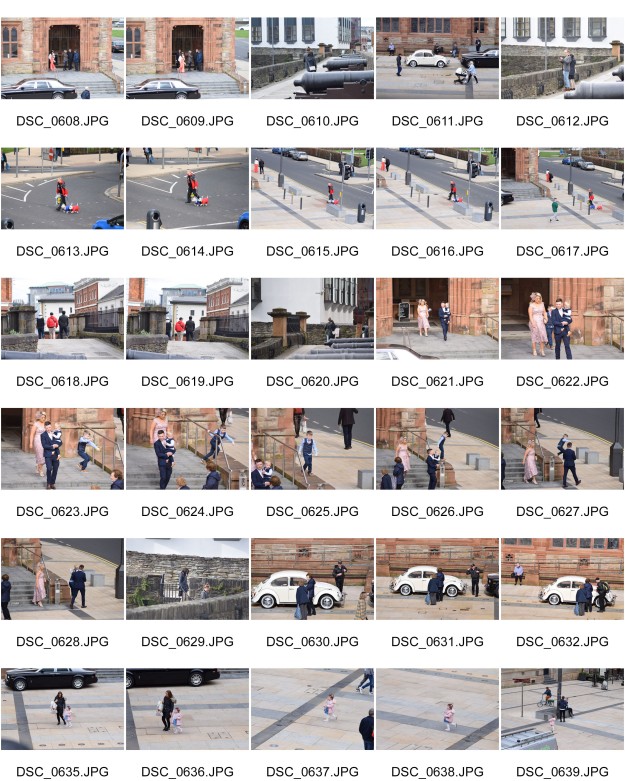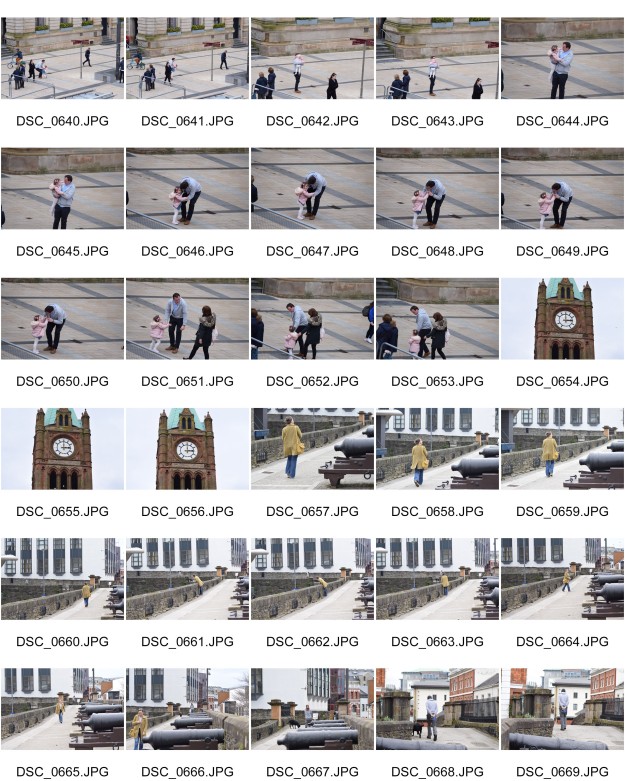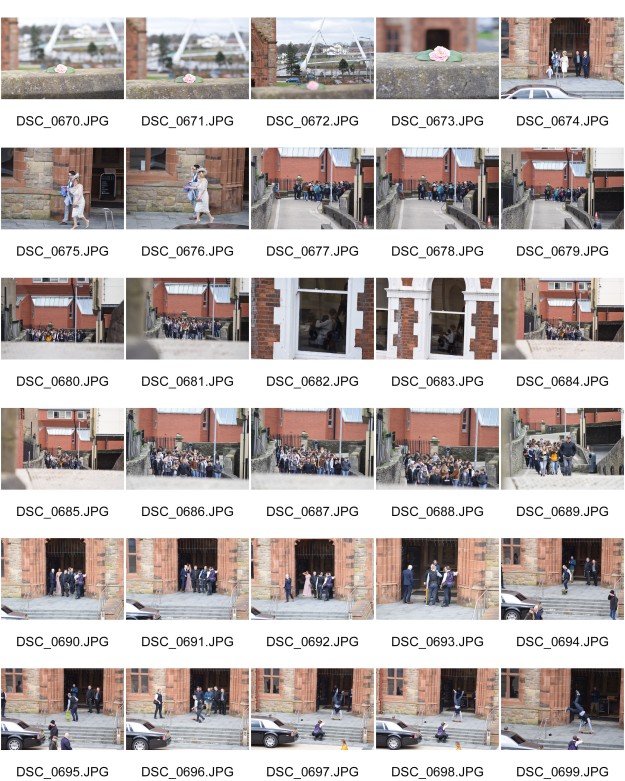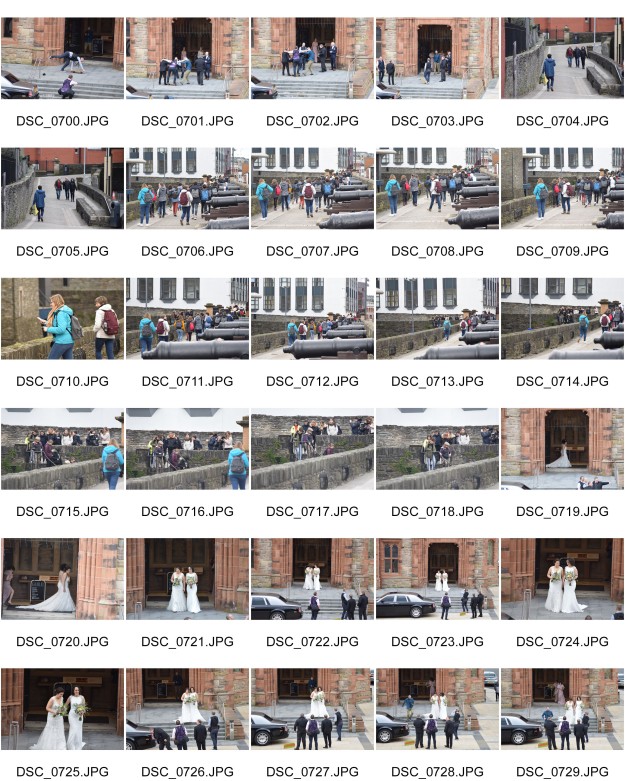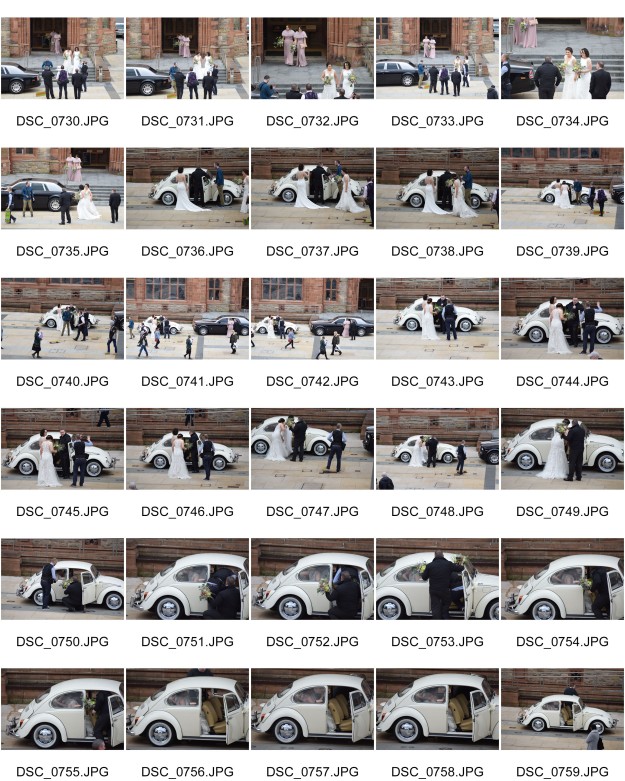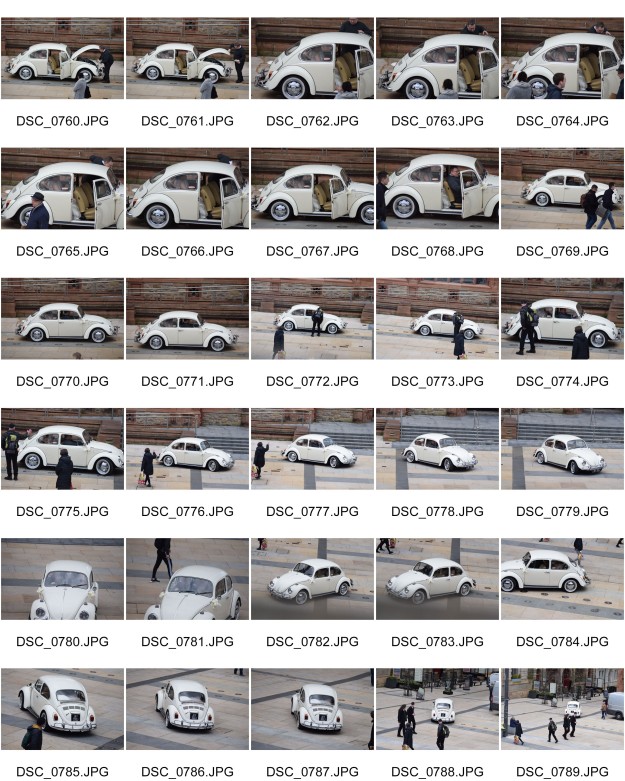Brief
I have been asked to create a set of 6 – 10 finished photos on the theme of the decisive moment, I may choose to create imagery that either supports the tradition of the ‘decisive moment’ or choose to question the concept by presenting a series of ‘indecisive’ moments. The aim is not to tell a story, but I must have a linking theme. I must include a written introduction to my work consisting of 1000 words (max).
After looking into the decisive moment from the previous exercise, I was left feeling a little lost and unsure of what to make of the decisive moment apart from the fact that the concept is outdated. I decided to go out and actively look for decisive moments, this way I could have a better understanding of the concept and I believe putting it into practice will only benefit my work. I will also try to capture some ‘indecisive’ moments also.
Having previously looked into Henri Cartier- Bresson I will add the research from it below. Link to my research
I looked into and read an article by Eric Kim, although most of the information in it is anecdotal, I found it helpful to gain a better understanding of how Henri Cartier -Bresson is viewed by others and how he shaped street photography for so many photographers. Eric Kim Article on the Decisive Moment
While looking into the article above he mentions Nick Waplington, a British photographer and artist born in 1965, he studied at the Royal College of Art. He published a book in 1999 called ‘The Indecisive Momento’. I decided to look into his work in more detail, that book consists of multiple diptychs throughout, here is a quote taken from the article by Eric Kim in which Waplinton is describing his work ” There is no doubt that the twentieth century photographically has been the century of the reportage image and Cartier-Bresson is undoubtedly the greatest reportage photographer of our time. Yet his idea of the decisive moment, in which you have one chance to capture an image and either you get it, or you miss it, seems dated. We live in post-modern age where non-moments have become as relevant as moments. Everything has validity and yet this idea of the decisive moment is still given credence within photographic circles. What I am trying to do is address this preconception and say that every and any moment works”. I feel this represents exactly what I believe, and it is fascinating that he was able to produce a photobook incorporating what he believes and what his view is of the decisive moment. I wish to do the same when I come to do photos for this assignment. Waplington has also worked with Alexander Mc Queen in 2013, he was approached to document the creative process of one of the fashion shows, little did he know that it would be Alexander Mc Queen’s final show as he later died by suicide. The photos he took where then exhibited at the Tate Britain. Article by Eric Kim, The Indecisive Momento
Youtube video on Nick Waplington working with Alexander Mc Queen
I then looked into street photographers who have been inspired by Cartier- Bresson’s work to gain a better understanding of how it the decisive moment has been used over the years and how others interpreted it. I came across Elliot Erwitt, born in 1928 to Russian parents. He spent most of his childhood in Milan but then moved America. He always had an interest in photography and in 1948 decided to move to New York and partake in film classes at the New School for Social Research. While in New York he met the founders of Magnum photos and joined them in 1953. He then went on in the late 1960s to serve as Magnum’s president for three years. A lot of his work has a witty sense of humour and are extremely well composed shots. One of his iconic photos has been mistaken to be captured by Cartier – Bresson when in fact it was Erwitt, he had been commissioned to photograph the Eiffel tower in its 100th year celebrations in 1989. This gives a great insight as to how Erwitt’s work has the same characteristics as Cartier- Bresson’s work has. Magnum Photos Article on Elliot Erwitt
Magnum Photos, Elliot Erwitt biography
Robert Doisneau, a French photographer born 1922 in Gentilly, a suburb of Paris. He came from middle- class family and discovered creative subjects ages fifteen at the Estienne School, he then became a camera assistant at André Vigneau’s studio in 1931. He is thought to have influenced Cartier- Bresson in his work, there is definite similarities between both. He died in 1994 and left behind some 450,000 negatives telling the story of his life. His most famous work is titled ‘The Kiss in Front of City Hall’ taken in 1950. Although back in the 1950s it was thought this photo was a candid but unfortunately it was later discovered that Doisneau hired an actor and actress and set up the scene, I find this so fascinating as it completely juxtaposes what Cartier- Bresson had strived for in his work. This furthers my point about the decisive moment, is it really a thing? Anything can be re-created or staged as Doisneau has proven. Although we cannot say for sure that all his images are staged, and I doubt every one is considering he claimed them to be serendipitous. This also strengthens my argument about times having changed as there are less moments that are merely our own especially with technology. “Doisneau is the story-teller among the exponts of a so called ‘photographie humaniste’. Whereas Cartier-Bresson followed the construcivist dictum and composed his photographs down to the last detail, Doisneau sought out the anecdote”.
Quoted from the book ’50 Photo Icons, the story behind them’ by Hans Michael Koetzle and was published by Taschen in 2017 (page 188).
I also looked into Garry Winogrand an American street photographer born on the 14th of January 1928 and died on March the 19th, 1984 from gallbladder cancer. He began to take photos in 1945 while being enrolled into the United States Air Force. From 1949 to 1951 he worked as a photographer at the New School of Social Research in New York City. His work is not unlike the previous photographers I have looked into he is known for his candid’s and in particular his knack for photographing humans in such a natural way. His main subject was American people, famous or not. “His odd angles of vision, dramatic juxtapositions, subjects in action, and multiple centres of interest produce tense images embodying anxieties and psychological ruptures of modern life” Winogrand famously summarized his purpose as a photographer by saying “I photograph to find out what something will look like photographed.” What his subjects ‘look like’ is very complex, a lot of his work juxtaposes another thing happening within the frame forcing the audience to not focus on one particular part of the photo, his straightforward comment often carries a surrealistic or comic edge. He found success as a magazine photographer but in 1955 he set off to travel through America photographing as he went. Eventually he decided to teach instead of doing commercial work. Like Elliot Erwitt above, he too photographed animals, except unlike Erwitt these animals were not domestic and in fact Winogrand photographed zoo animals in and outside their cage, called ‘The Animals’ (1969).
Oxford reference Garry Winogrand
Tablet Magazine Article on Garry Winogrand
MoMa Profile on Garry Winogrand
The last photographer I looked into was Denis Cherim, unfortunately I cannot find much on his life as he is very unknown, although he is based in London. He has started slowly to get more recognition due to his work called ‘The Coincidence Project’ which as comes to no surprise consists of a bunch of coincident or, so we are led to believe! His work is so well composed, and everything is lined up impeccably, its astonishing the feats he must have had to go to line everything up so well. His work is so aesthetically pleasing to the eye, he started this project in 2012 and his main subject is urban and natural landscapes with the odd animal thrown in. “Through the coincidences of unconnected elements, I discover new places where nothing is beautiful or ugly, nothing big or small, nothing is good or bad, it is only exciting. Suddenly duality disappears and leaves space for unity”. This is relevant to the decisive moment as it makes me question the decisive moment or the indecisive moment, what really makes something decisive? Or indecisive. Is life just a series of decisive moments or is it coincidences? Do we fail to recognise all these moments every day because we are so wrapped up in our own worlds? Is that why aesthetically pleasing photographs that have been composed perfectly like Cartier-Bresson’s work, is what we like to see because we fail to see it ourselves? Do we require to be reminded of those precious moments, especially now as times have changed since the 1950s.
Denis Cherim on The Coincidence Project
Article on The Coicindence Project
Having looked into the photographers above I know I would like to explore myth, if you believe it to be, of the decisive moment and discover how our time now has changed the decisive moment. How decisive moments differ from person to person and what makes them different.
Please find attached my introduction to my work,
Planning and execution
Once having decided a location, the Guildhall in Derry; I then decided to take the photos from a high up advantage point so I could see in more detail the happenings of that day. I went up the ancient walls that overlook the Guildhall square and positioned myself there for about 3 hrs, I brought my telephoto lens with me (sigma 70-300mm zoom) and decided that my tripod was unnecessary as I could rest my camera on the walls, I didn’t have much of a plan as to what I was looking for apart from the fact I wanted photos of a mix of people of all different ages. My main aim was to record some moments that where easily gone in a matter of seconds, I personally feel this is a better way to describe the decisive moment as anything can be re-created. It just so happened that on the day I decided to shoot there was a civil marriage or partnership taking place, therefore the square was quite busy and lots of people seemed intrigued by the vintage car sitting out front. It was a golden opportunity to get some nice moments. I started photographing people’s reactions to the vintage car and noticed how friendly everyone was, it was a nice day and people were sitting chatting, which was nice to see compared to a big city where everyone is rushed off their feet. I was satisfied with how many photos I had and decided to go home.
It was as I looked through all the photos, I took I noticed a pattern, people where always on their phones but this only applied to those who were maybe aged 13 -50 therefore are those people missing out on decisive moments? They were so glued to their phones that they missed other wonderful moments I photographed from either children or elderly men having a good chat. Is technology ruining what little moments we have in life? People like to blame the younger generations for being obsessed with technology but judging by my photos there were more adults on their phones than teenagers! Although technology is great and has its perks, the warning signs have already been happening regarding social media and how young people view themselves and their relationships with others. Now a days no one will post a photo of decisive moment that made them happy they will take a picture, edit, factune and filter it until the real moment is gone. That’s why I believe the decisive moment is not relevant anymore, especially to younger generations.
The following are my final 10 photos,
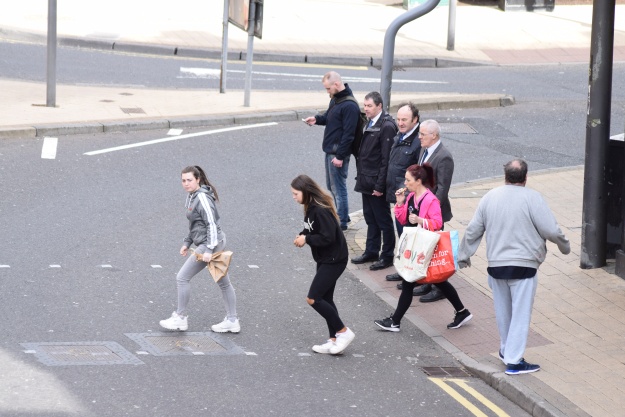
I have choosen this photo because of the varity of people, also the way I have lined up this photo I feel is very effective, that all three women have walked off the footpath but the men in suits remain. I also love how the man at the centre of the image is on his phone and completely unaware of his surroundings, proving my point that technology has changed how we interact with others
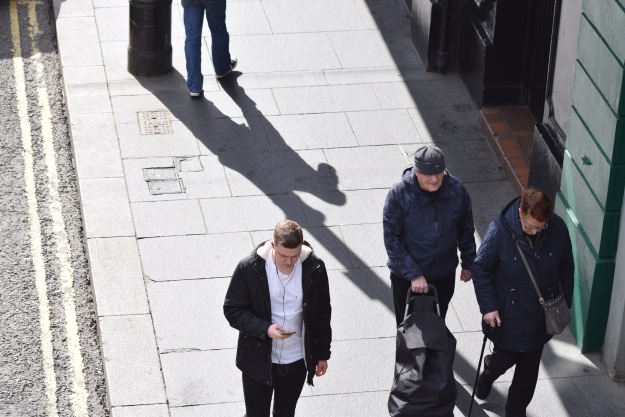
In this photo, there is an elderly couple walking and besde them is a young person on their phone I feel this image is well composed, there are a lot of vertical lines running throughtout all different parts of the frame and the fact that the young person is on their phone and the older couple are simply walking plays into my opinion that technology is taking away what moments we have.
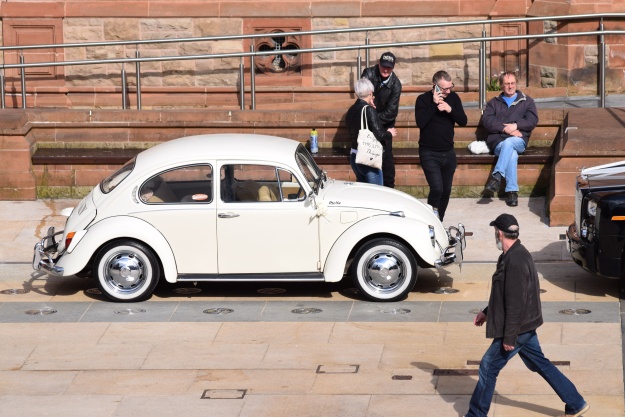
In this photo, I personally love how this turned out, the timing was perfect in the sense that all the people are lined up well we can see one man on the phone and another sitting casually and then of course at the bottom right hand corner we have the man wondering what is going on, I feel I encorporated a little Cartier-Bresson in this photo in particular due to the fact the man is mid walk. The vintage car in this photo also looks very well and the horizomtal lines throughout this image is very aethetically pleasing to me.
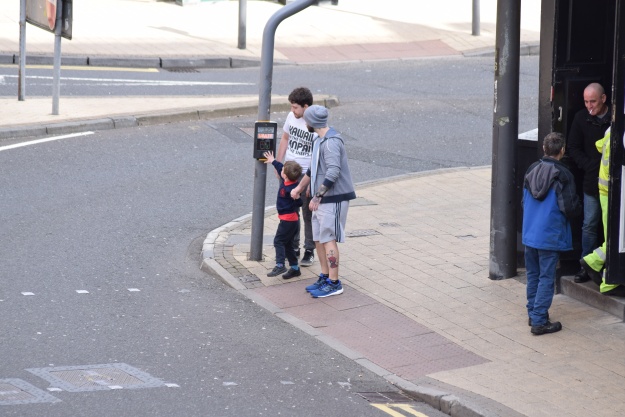
I choose this photo because of the innocence shown in just pressing the button, to the child this is a decisive moment, personal to him yet we press about five of these buttons a day and never think twice! There is a great deal of nostalgia in this photo for me becasue when I was younger it was a race to see how could press the button first between both my brother and I. The men in the background are having a good chat and it is nice to see him smiling. I feel it is the human gestures in this image that make it a good photo.
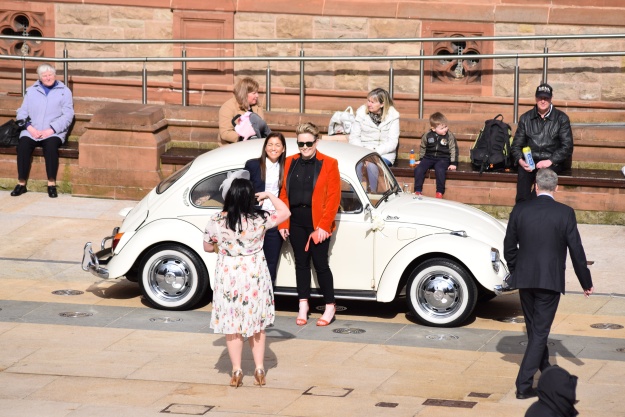
In this photo we can see again more phones, except these are some guests from the weeding that was taking place in the guilhall. I like this image because of the gesrtures, each person is doing something different yet they all fit into the shot so well. Everyone apart from the wedding guests are looking in a different direction and of course the car and the sun is the main attraction.
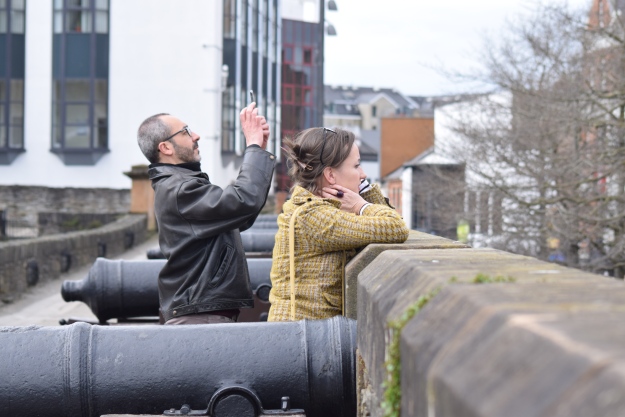
Personally I love this photo, again we see another phone but in this photo we can see two different perspectives. One from a man wanting to document the Guildhall and a women just wanting to experience it for herself. Although they look like they are together they are in fact complete strangers and are standing a great distance apart. These are both two very different moments, can we say that the man’s moment is indecisive as he is choosing to photograph it or is the women’s moment more decisive?
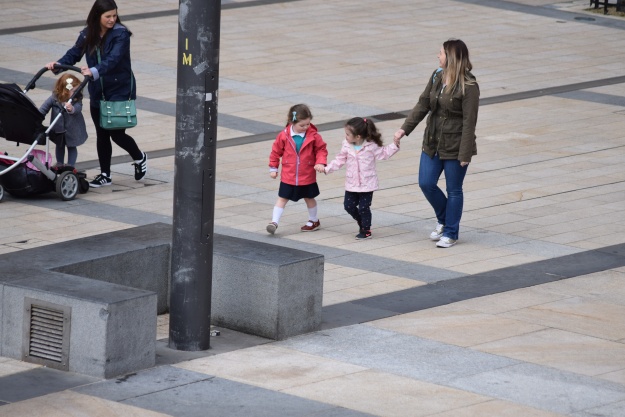
This photo is my favourite out of all the photos presented. The sencerity in this photo speaks volumes, these two little girls are just enjoying their moment and are happy to play and be in eachothers company without distractions like technlogy etc. The mothers look so pleased at how happy the little girls are and all together this is a very heart warming photo. I feel the colours of their coats is perfect at catching the eye and drawing attention to them, the pillar and paving is also very effective at making the image appear more structured and composed.
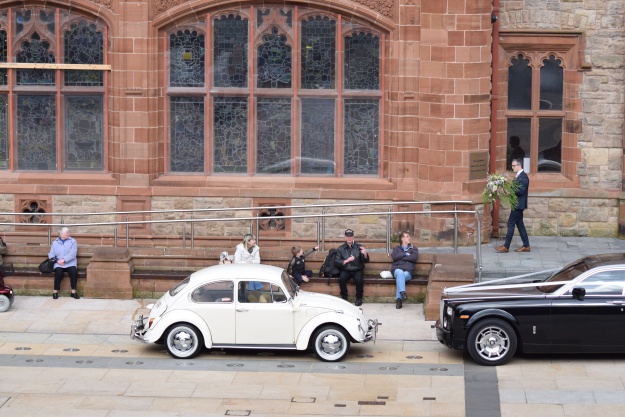
Regarding this photo, I feel it is the gestures again in this photo that make it pleasing, the little boy is pointing at the big bouqet of wedding flowers, everyone is staring but the man in the leather jacket, who is in fact staring stright into my camera. The reflection of the man’s head in the window of the guildhall is also another feature and I feel this is well composed although I wish the mobility scooter on the left was out of frame.
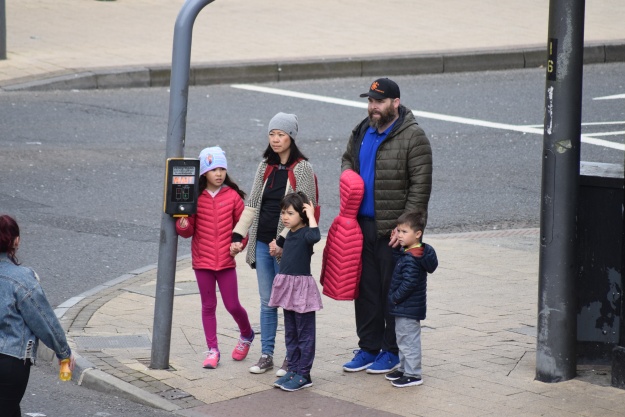
I choose this photo becasue of the childrens expressions, they look confused but excited. The eldest has pressed the button and to her its not a decisive moment unlike the photo before. I do and do not like how this is composed as the girl on the left is half in the frame when I’d much rather her not be there, but I like the way the family is positioned.
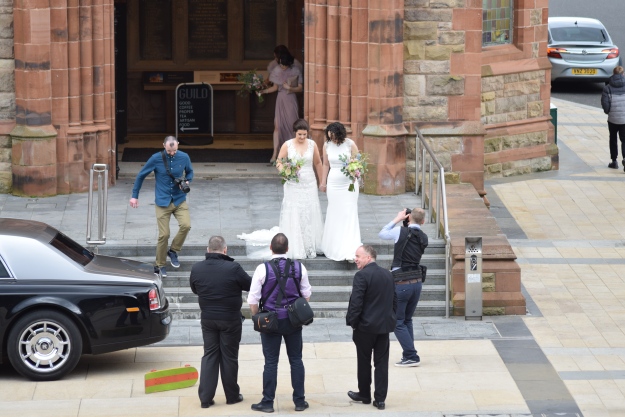
And my final photo is a well composed shot, the wedding photographers all standing round, with the driver waiting. Both Bride’s look beautiful standing at the top of the Guildhall stairs, you can see the skate board to the left, although random it fits in well witht he shot as a nice pop of colour. I would of liked the bridesmaid’s to be out behind them but I feel the shot still works really well.
Final Thoughts
I feel overall the shoot went well, my research was most vital and of course going and seeking some decisive and indecisve moments grately helped me in understanding the concept put forward by Cartier- Bresson. I still believe that the decisive moment is not relevant in today’s society especially when everyone has a camera and then feels a societal pressure to chop and change an image to make it ‘instagramable’. I feel that in the future we will either continue to lose more precious moments and photography like Cartier-Bresson and especially Denis Cherim will become more popular because we will crave those moments even if it is an image and not in real life, or we will regress completely and we will see more and more people turn away from technology but I highly doubt the latter.
I feel my photos are concise and relevant to my interpetation of the decisive moment, I feel I have done enough research and have a better understanding of how import compsotion is and how human gestures is what really makes a photo unique. I will not say if my photos are decisive or indecisve because to me it doesn’t matter, these are moments regardless, good or bad. As a concept I feel it is a great way of teaching someone to look for moments that often go ignored and Cartier – Bresson had a real knack for that but I believe it has been blown out of proprtion, slightly. Although no one can disregard the talent he had for photogrpahy and he will continue to inspire photographers for years to come, just like he has inspired me, to notice the unoticable.
Demonstration of technical and visual skills (40%) I feel I have shown great visual awareness, especially in the assignment due to the nature of the decisive moment. I have greatly improved my compostional skills because of this assignment and will continue to imporve them in the future.
Quality of outcome (20%) I feel I have presented my work in a coherent manner, it is concise and reads well. My content is factual and opinionated yet respectful and my application of knowledge is shown through my photos. I could have communicated my ideas better and I will in the future.
Demonstation of creativity (20%) I feel that this assignment in particular didnt allow me to be as creative as I would have liked, I struggled to be creative yet meet the brief and I shall improve on this in the future.
Conetxt (20%) I feel I have loads of reseach that backs my argument and lots of research that poses some interesting questions, I could be more critical with my work. I did a lot of reflection in this assignment by finding out what the decisive moment meant to me and i foudn that really helpful when I came to do my photos.
Please find my contact sheets below,
